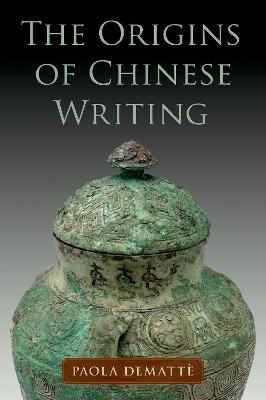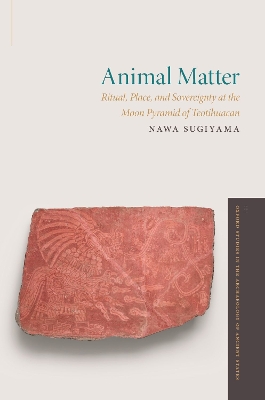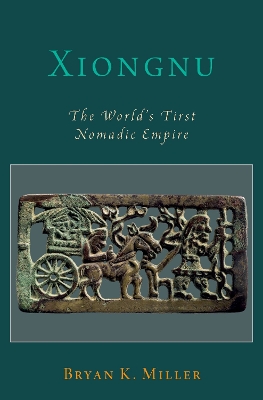Origins of Chinese Writing
 -10%
portes grátis
-10%
portes grátis
Origins of Chinese Writing
Dematte, Paola
Oxford University Press Inc
12/2022
480
Dura
Inglês
9780197635766
15 a 20 dias
Descrição não disponível.
Table of content i-iii
List of figures iv-xi
0. Introduction 1-16
0.1 Origins of Chinese writing: the scope of this research
0.2 Theory
0.3 The debate on the origins of Chinese writing: dynamics and timing
0.4 Archaeology and Textual sources
0.5 Goals and limits
0.6 Organization of the book
0.7 A note on terminology
0.8 On phonetic transcriptions.
0.9 Translations
Part I - Theories and philosophies of writing
Chapter 1: The nature of Chinese writing 17-37
1.1 Logographs and ideographs
1.2 Monosyllabism and beyond
1.3 Reading Chinese characters
1.4 Structure of Chinese characters
1.5 Types of characters (orthography)
1.6 Polysemy, homographs and allographs
1.7 Languages, writing, and diglossia
Chapter 2: Western and Chinese philosophers on language and writing 34-85
2.1 Philosophers on language and writing: the European tradition
2.2 Language and writing: Zhou philosophers and the Chinese tradition
2.3 Early etymological and philological enquiries: Erya and Shuowen jiezi
2.4 Traditional narratives on the origins of writing
2.5 The origins of Chinese writing according to the Shuowen jiezi
2.6 Fuxi and the trigrams of the Yijing
2.7 Shennong and rope knotting
2.8 Huangdi's minister Cangjie creates the first signs
2.9 Myth on the origins of writing and history
Chapter 3: What is Writing? 86-126
3.1 Verba volant scripta manent
3.2 What is writing? Visual representation, metrology, language
3.3 Imagery and writing: overlappings
3.4 Rock art, pre-historic art: signs, scenes, and narratives
3.5 Early writing and numbers
3.6 Early writing and language recording
3.7 Writing's origins: evolution or invention?
3.8 Origins of Chinese writing: looking at the earliest signs
Part II - The Neolithic Evidence
Chapter 4: Early and Middle Neolithic Signs to the Fourth millennium BCE 127-170
4.1 The Neolithic scenario
4.2 The Paleolithic - Neolithic transition
4.3 The Early Neolithic (8000-5000 BCE): archaeology and signs
4.4 Fifth to Fourth Millennium BCE: Middle Neolithic Signs
4.5 Early symbols in the Yangzi River Valley: Hemudu and Songze
4.6 Shuangdun pictorial signs on pottery
4.7 Signs in the Middle Yangzi Three Gorges and adjacent areas: Daxi (Daixi)
4.8 The Middle Yellow and Wei River Valleys: Yangshao and its signs
4.8.1 Marks on pottery at Yangshao sites
4.8.2 Yangshao marks: previous interpretations
4.8.3 Yangshao signs: conclusions
4.9 Middle and Upper Yellow River valley painted pottery designs
4.10 Gansu and Qinghai area signs: Dadiwan, Majiayao, Banshan, Machang
4.11 The Liao River Valley: Hongshan tri-dimensional signs
4.11.1 Hongshan sites
4.11.2 Hongshan jades
4.12 Conclusions
Chapter 5: The Third Millennium BCE: Late Neolithic Sign Systems 171-237
5.1 The Late Neolithic (3000-2300 BCE) and the Longshan Transition (2300-1900 BCE)
5.2 The Lower Yellow River Valley and Coastal Areas: Dawenkou
5.3.1 Dawenkou sites with graphs
5.3.2 Dawenkou graphs: structural analysis
5.3.3 Dawenkou signs: the archaeological evidence
5.5 The lower Yangzi River valley and delta area: Liangzhu
5.5.1 Inscribed Liangzhu jades: collections and provenance
5.3.2 Liangzhu jade graphs: structure, types and previous interpretations
5.5.3 Liangzhu graphs: meanings and functions
5.5.4 Liangzhu emblems and decorations: the double-face
5.5.5 Liangzhu pottery marks
5.5.6 Liangzhu signs: conclusions
5.6 The Jianghan - Dongting area: Qujialing and Shijiahe (c. 3200-2000 BCE)
5.6.1 Qujialing and Shijiahe graphs
5.6.2 Shijiahe graphs: analysis
5.7 The Middle and Lower Yellow River Valleys: Shandong Longshan and adjacent sites
5.7.1 Chengziyai
5.7.2 Some controversial
List of figures iv-xi
0. Introduction 1-16
0.1 Origins of Chinese writing: the scope of this research
0.2 Theory
0.3 The debate on the origins of Chinese writing: dynamics and timing
0.4 Archaeology and Textual sources
0.5 Goals and limits
0.6 Organization of the book
0.7 A note on terminology
0.8 On phonetic transcriptions.
0.9 Translations
Part I - Theories and philosophies of writing
Chapter 1: The nature of Chinese writing 17-37
1.1 Logographs and ideographs
1.2 Monosyllabism and beyond
1.3 Reading Chinese characters
1.4 Structure of Chinese characters
1.5 Types of characters (orthography)
1.6 Polysemy, homographs and allographs
1.7 Languages, writing, and diglossia
Chapter 2: Western and Chinese philosophers on language and writing 34-85
2.1 Philosophers on language and writing: the European tradition
2.2 Language and writing: Zhou philosophers and the Chinese tradition
2.3 Early etymological and philological enquiries: Erya and Shuowen jiezi
2.4 Traditional narratives on the origins of writing
2.5 The origins of Chinese writing according to the Shuowen jiezi
2.6 Fuxi and the trigrams of the Yijing
2.7 Shennong and rope knotting
2.8 Huangdi's minister Cangjie creates the first signs
2.9 Myth on the origins of writing and history
Chapter 3: What is Writing? 86-126
3.1 Verba volant scripta manent
3.2 What is writing? Visual representation, metrology, language
3.3 Imagery and writing: overlappings
3.4 Rock art, pre-historic art: signs, scenes, and narratives
3.5 Early writing and numbers
3.6 Early writing and language recording
3.7 Writing's origins: evolution or invention?
3.8 Origins of Chinese writing: looking at the earliest signs
Part II - The Neolithic Evidence
Chapter 4: Early and Middle Neolithic Signs to the Fourth millennium BCE 127-170
4.1 The Neolithic scenario
4.2 The Paleolithic - Neolithic transition
4.3 The Early Neolithic (8000-5000 BCE): archaeology and signs
4.4 Fifth to Fourth Millennium BCE: Middle Neolithic Signs
4.5 Early symbols in the Yangzi River Valley: Hemudu and Songze
4.6 Shuangdun pictorial signs on pottery
4.7 Signs in the Middle Yangzi Three Gorges and adjacent areas: Daxi (Daixi)
4.8 The Middle Yellow and Wei River Valleys: Yangshao and its signs
4.8.1 Marks on pottery at Yangshao sites
4.8.2 Yangshao marks: previous interpretations
4.8.3 Yangshao signs: conclusions
4.9 Middle and Upper Yellow River valley painted pottery designs
4.10 Gansu and Qinghai area signs: Dadiwan, Majiayao, Banshan, Machang
4.11 The Liao River Valley: Hongshan tri-dimensional signs
4.11.1 Hongshan sites
4.11.2 Hongshan jades
4.12 Conclusions
Chapter 5: The Third Millennium BCE: Late Neolithic Sign Systems 171-237
5.1 The Late Neolithic (3000-2300 BCE) and the Longshan Transition (2300-1900 BCE)
5.2 The Lower Yellow River Valley and Coastal Areas: Dawenkou
5.3.1 Dawenkou sites with graphs
5.3.2 Dawenkou graphs: structural analysis
5.3.3 Dawenkou signs: the archaeological evidence
5.5 The lower Yangzi River valley and delta area: Liangzhu
5.5.1 Inscribed Liangzhu jades: collections and provenance
5.3.2 Liangzhu jade graphs: structure, types and previous interpretations
5.5.3 Liangzhu graphs: meanings and functions
5.5.4 Liangzhu emblems and decorations: the double-face
5.5.5 Liangzhu pottery marks
5.5.6 Liangzhu signs: conclusions
5.6 The Jianghan - Dongting area: Qujialing and Shijiahe (c. 3200-2000 BCE)
5.6.1 Qujialing and Shijiahe graphs
5.6.2 Shijiahe graphs: analysis
5.7 The Middle and Lower Yellow River Valleys: Shandong Longshan and adjacent sites
5.7.1 Chengziyai
5.7.2 Some controversial
Este título pertence ao(s) assunto(s) indicados(s). Para ver outros títulos clique no assunto desejado.
Table of content i-iii
List of figures iv-xi
0. Introduction 1-16
0.1 Origins of Chinese writing: the scope of this research
0.2 Theory
0.3 The debate on the origins of Chinese writing: dynamics and timing
0.4 Archaeology and Textual sources
0.5 Goals and limits
0.6 Organization of the book
0.7 A note on terminology
0.8 On phonetic transcriptions.
0.9 Translations
Part I - Theories and philosophies of writing
Chapter 1: The nature of Chinese writing 17-37
1.1 Logographs and ideographs
1.2 Monosyllabism and beyond
1.3 Reading Chinese characters
1.4 Structure of Chinese characters
1.5 Types of characters (orthography)
1.6 Polysemy, homographs and allographs
1.7 Languages, writing, and diglossia
Chapter 2: Western and Chinese philosophers on language and writing 34-85
2.1 Philosophers on language and writing: the European tradition
2.2 Language and writing: Zhou philosophers and the Chinese tradition
2.3 Early etymological and philological enquiries: Erya and Shuowen jiezi
2.4 Traditional narratives on the origins of writing
2.5 The origins of Chinese writing according to the Shuowen jiezi
2.6 Fuxi and the trigrams of the Yijing
2.7 Shennong and rope knotting
2.8 Huangdi's minister Cangjie creates the first signs
2.9 Myth on the origins of writing and history
Chapter 3: What is Writing? 86-126
3.1 Verba volant scripta manent
3.2 What is writing? Visual representation, metrology, language
3.3 Imagery and writing: overlappings
3.4 Rock art, pre-historic art: signs, scenes, and narratives
3.5 Early writing and numbers
3.6 Early writing and language recording
3.7 Writing's origins: evolution or invention?
3.8 Origins of Chinese writing: looking at the earliest signs
Part II - The Neolithic Evidence
Chapter 4: Early and Middle Neolithic Signs to the Fourth millennium BCE 127-170
4.1 The Neolithic scenario
4.2 The Paleolithic - Neolithic transition
4.3 The Early Neolithic (8000-5000 BCE): archaeology and signs
4.4 Fifth to Fourth Millennium BCE: Middle Neolithic Signs
4.5 Early symbols in the Yangzi River Valley: Hemudu and Songze
4.6 Shuangdun pictorial signs on pottery
4.7 Signs in the Middle Yangzi Three Gorges and adjacent areas: Daxi (Daixi)
4.8 The Middle Yellow and Wei River Valleys: Yangshao and its signs
4.8.1 Marks on pottery at Yangshao sites
4.8.2 Yangshao marks: previous interpretations
4.8.3 Yangshao signs: conclusions
4.9 Middle and Upper Yellow River valley painted pottery designs
4.10 Gansu and Qinghai area signs: Dadiwan, Majiayao, Banshan, Machang
4.11 The Liao River Valley: Hongshan tri-dimensional signs
4.11.1 Hongshan sites
4.11.2 Hongshan jades
4.12 Conclusions
Chapter 5: The Third Millennium BCE: Late Neolithic Sign Systems 171-237
5.1 The Late Neolithic (3000-2300 BCE) and the Longshan Transition (2300-1900 BCE)
5.2 The Lower Yellow River Valley and Coastal Areas: Dawenkou
5.3.1 Dawenkou sites with graphs
5.3.2 Dawenkou graphs: structural analysis
5.3.3 Dawenkou signs: the archaeological evidence
5.5 The lower Yangzi River valley and delta area: Liangzhu
5.5.1 Inscribed Liangzhu jades: collections and provenance
5.3.2 Liangzhu jade graphs: structure, types and previous interpretations
5.5.3 Liangzhu graphs: meanings and functions
5.5.4 Liangzhu emblems and decorations: the double-face
5.5.5 Liangzhu pottery marks
5.5.6 Liangzhu signs: conclusions
5.6 The Jianghan - Dongting area: Qujialing and Shijiahe (c. 3200-2000 BCE)
5.6.1 Qujialing and Shijiahe graphs
5.6.2 Shijiahe graphs: analysis
5.7 The Middle and Lower Yellow River Valleys: Shandong Longshan and adjacent sites
5.7.1 Chengziyai
5.7.2 Some controversial
List of figures iv-xi
0. Introduction 1-16
0.1 Origins of Chinese writing: the scope of this research
0.2 Theory
0.3 The debate on the origins of Chinese writing: dynamics and timing
0.4 Archaeology and Textual sources
0.5 Goals and limits
0.6 Organization of the book
0.7 A note on terminology
0.8 On phonetic transcriptions.
0.9 Translations
Part I - Theories and philosophies of writing
Chapter 1: The nature of Chinese writing 17-37
1.1 Logographs and ideographs
1.2 Monosyllabism and beyond
1.3 Reading Chinese characters
1.4 Structure of Chinese characters
1.5 Types of characters (orthography)
1.6 Polysemy, homographs and allographs
1.7 Languages, writing, and diglossia
Chapter 2: Western and Chinese philosophers on language and writing 34-85
2.1 Philosophers on language and writing: the European tradition
2.2 Language and writing: Zhou philosophers and the Chinese tradition
2.3 Early etymological and philological enquiries: Erya and Shuowen jiezi
2.4 Traditional narratives on the origins of writing
2.5 The origins of Chinese writing according to the Shuowen jiezi
2.6 Fuxi and the trigrams of the Yijing
2.7 Shennong and rope knotting
2.8 Huangdi's minister Cangjie creates the first signs
2.9 Myth on the origins of writing and history
Chapter 3: What is Writing? 86-126
3.1 Verba volant scripta manent
3.2 What is writing? Visual representation, metrology, language
3.3 Imagery and writing: overlappings
3.4 Rock art, pre-historic art: signs, scenes, and narratives
3.5 Early writing and numbers
3.6 Early writing and language recording
3.7 Writing's origins: evolution or invention?
3.8 Origins of Chinese writing: looking at the earliest signs
Part II - The Neolithic Evidence
Chapter 4: Early and Middle Neolithic Signs to the Fourth millennium BCE 127-170
4.1 The Neolithic scenario
4.2 The Paleolithic - Neolithic transition
4.3 The Early Neolithic (8000-5000 BCE): archaeology and signs
4.4 Fifth to Fourth Millennium BCE: Middle Neolithic Signs
4.5 Early symbols in the Yangzi River Valley: Hemudu and Songze
4.6 Shuangdun pictorial signs on pottery
4.7 Signs in the Middle Yangzi Three Gorges and adjacent areas: Daxi (Daixi)
4.8 The Middle Yellow and Wei River Valleys: Yangshao and its signs
4.8.1 Marks on pottery at Yangshao sites
4.8.2 Yangshao marks: previous interpretations
4.8.3 Yangshao signs: conclusions
4.9 Middle and Upper Yellow River valley painted pottery designs
4.10 Gansu and Qinghai area signs: Dadiwan, Majiayao, Banshan, Machang
4.11 The Liao River Valley: Hongshan tri-dimensional signs
4.11.1 Hongshan sites
4.11.2 Hongshan jades
4.12 Conclusions
Chapter 5: The Third Millennium BCE: Late Neolithic Sign Systems 171-237
5.1 The Late Neolithic (3000-2300 BCE) and the Longshan Transition (2300-1900 BCE)
5.2 The Lower Yellow River Valley and Coastal Areas: Dawenkou
5.3.1 Dawenkou sites with graphs
5.3.2 Dawenkou graphs: structural analysis
5.3.3 Dawenkou signs: the archaeological evidence
5.5 The lower Yangzi River valley and delta area: Liangzhu
5.5.1 Inscribed Liangzhu jades: collections and provenance
5.3.2 Liangzhu jade graphs: structure, types and previous interpretations
5.5.3 Liangzhu graphs: meanings and functions
5.5.4 Liangzhu emblems and decorations: the double-face
5.5.5 Liangzhu pottery marks
5.5.6 Liangzhu signs: conclusions
5.6 The Jianghan - Dongting area: Qujialing and Shijiahe (c. 3200-2000 BCE)
5.6.1 Qujialing and Shijiahe graphs
5.6.2 Shijiahe graphs: analysis
5.7 The Middle and Lower Yellow River Valleys: Shandong Longshan and adjacent sites
5.7.1 Chengziyai
5.7.2 Some controversial
Este título pertence ao(s) assunto(s) indicados(s). Para ver outros títulos clique no assunto desejado.







